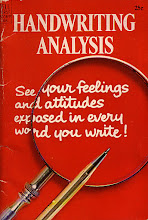





It's a Quaker Oats can filled with matches. The Claw Machine bought it at a junk shop's "Going Out Of Business" sale. There, amid the pressboard dressers, sewing machines, paperback novels, and brass lamps were 2 more identical cans that could have been purchased but regrettably were not. These 3 cans represent someone's life collection of matches. In this can, there are 66 matchbooks and boxes, too many to list or show here. Representative pieces include:
- The Carnelian Room - San Francisco
- Steak and Ale Restaurant - Atlanta
- Salute Trattoria Italiana - Fort Lauderdale
- Gasparilla Inn and Cottages - Boca Grande
- Dayton Airport Inn
- Hutchens Mortuary - St. Louis
- Westborough Country Club - St. Louis
- Holiday Inn - Westport, St. Louis
- Holiday Inn - Glasgow
- Holiday Inn - London (Marble Arch)
- Trader Vic's - London
- Ledoyen Hotel - Paris
- Hotel Jagdschloss - Netherlands
- Concorde - Air France
- Hyatt Regency - Maui

Who was the collector of matches? Why did this person collect them? The matches are undated, so if a timeline of the collection were to be created, it would have to be by best-guessing the age of each by wear (such as fading or yellowing), typography or technology of printing. However, since almost every matchbook lists an address, we can still chart the journey of an anonymous collector through restaurants, steak houses, lounges, hotels, country clubs, and mortuaries. Through research and analysis, 3 profiles have been created, all of equal probability:
1. The collector, likely a white male, was a smoker, a drinker, a traveler. Judging by his frequent trips to non-vacation regional destinations such as Paducah, KY, he was a salesman of some kind. He was a veteran, at one point serving in the Navy (a detail derived from Matchbook #45, "US Navy Seal"). He enjoyed golf, steaks, country clubs. Judging by the (estimated) age of the the pieces in the collection, he was born in the 1930s, died in the 90s. He may have been a philanderer, as the only duplicate matchbooks in the collection came from hotels within a 20 minutes' drive from where the can was found. Since it seems unlikely that this collection traveled far after the collector's death, we believe that the collector met some secret lover at hotels in the city, away from his suburban life, and kept matchbooks as souvenirs of each tryst. One such memento, from The Greenbriar Hills Country Club (#21, Kirkwood, Missouri) has a telephone number written on the back. What his relatives thought when going through the matches he left behind, one can only guess.


2. Approximately 30% of all matches in the collection carry the Universal Match or the Diamond Match Company imprint. Both are defunct businesses that shared the same address, 400 Paul Avenue in St. Louis. It seems possible that the can(s) of matches may have served as a portfolio of sorts for a matchbook graphic designer, now retired or deceased. The remaining 70% of the collection not manufactured by the Universal Match or Diamond Match Company can easily be explained. Not all matches carry an imprint, and therefore could still be products of Universal Match or Diamond Match Company. Matches carrying a competitor's imprint may have been collected as inspiration for materials, printing processes, designs, etc.


3. Some combination of both profiles above. We imagine a swinging matchbook salesman/designer, traveling the world, puffing fat cigars, getting sloshed with his clients in the corner booth at the hotel bar. It's Friday night, and he's buying. At closing time, the lights come on and out comes the pen and order form. Hoteliers and restauranteurs, he sells them all, scoring the big orders from famous chains with his charm and stunning designs. Living hard and fast, he dies rich and too young, with nothing but oatmeal cans full of colorful matchbooks to show where he's been.



No comments:
Post a Comment